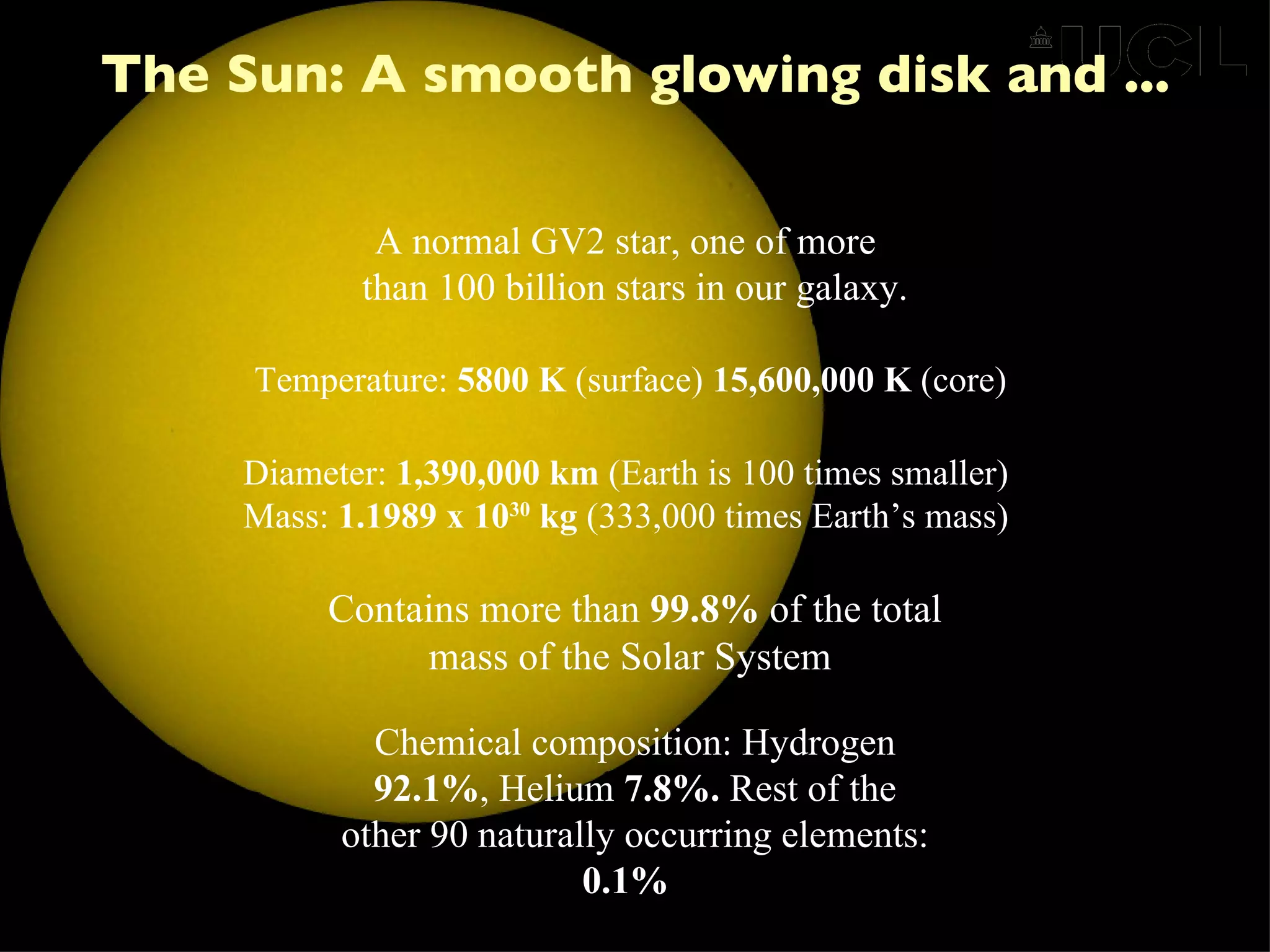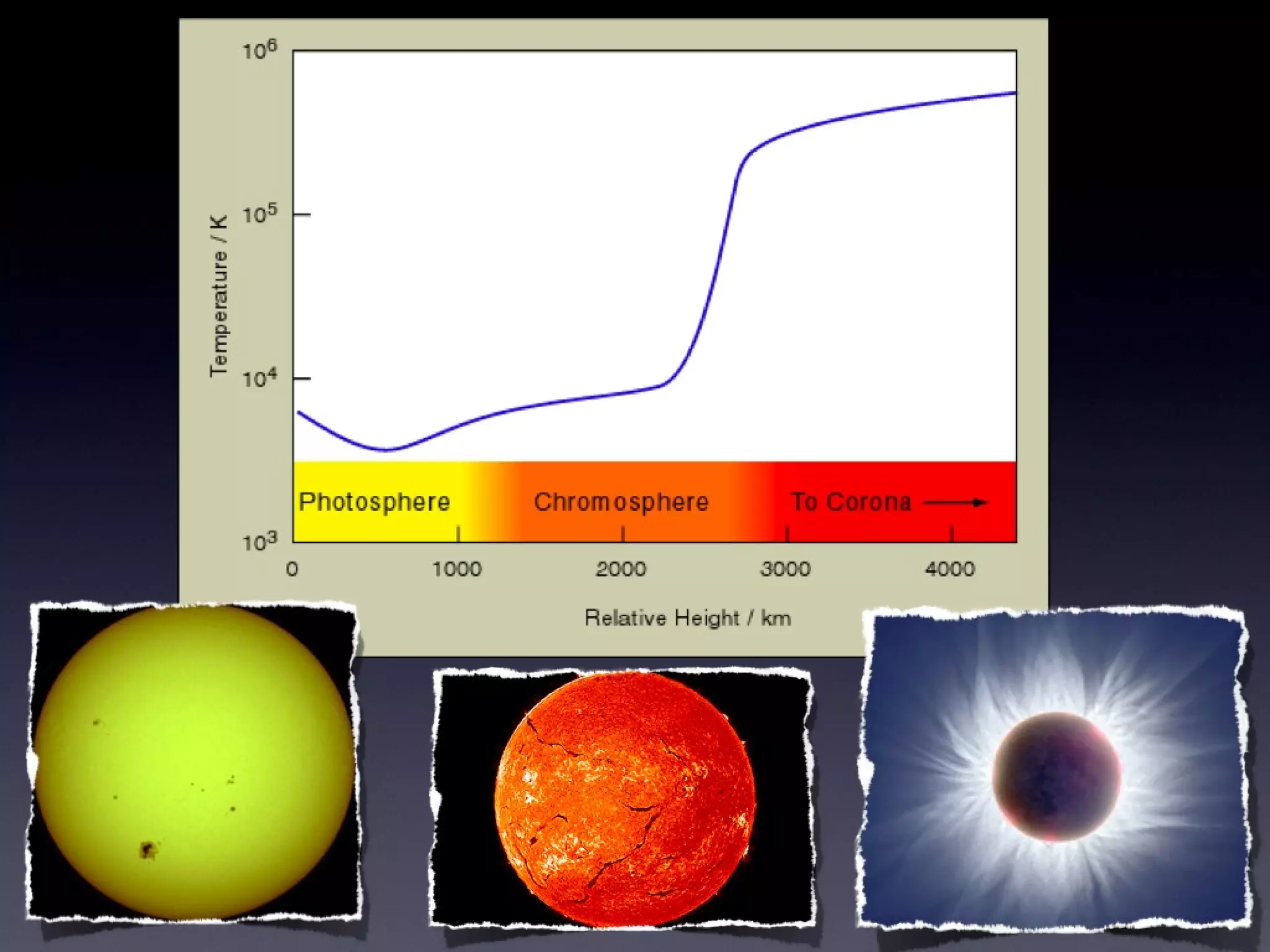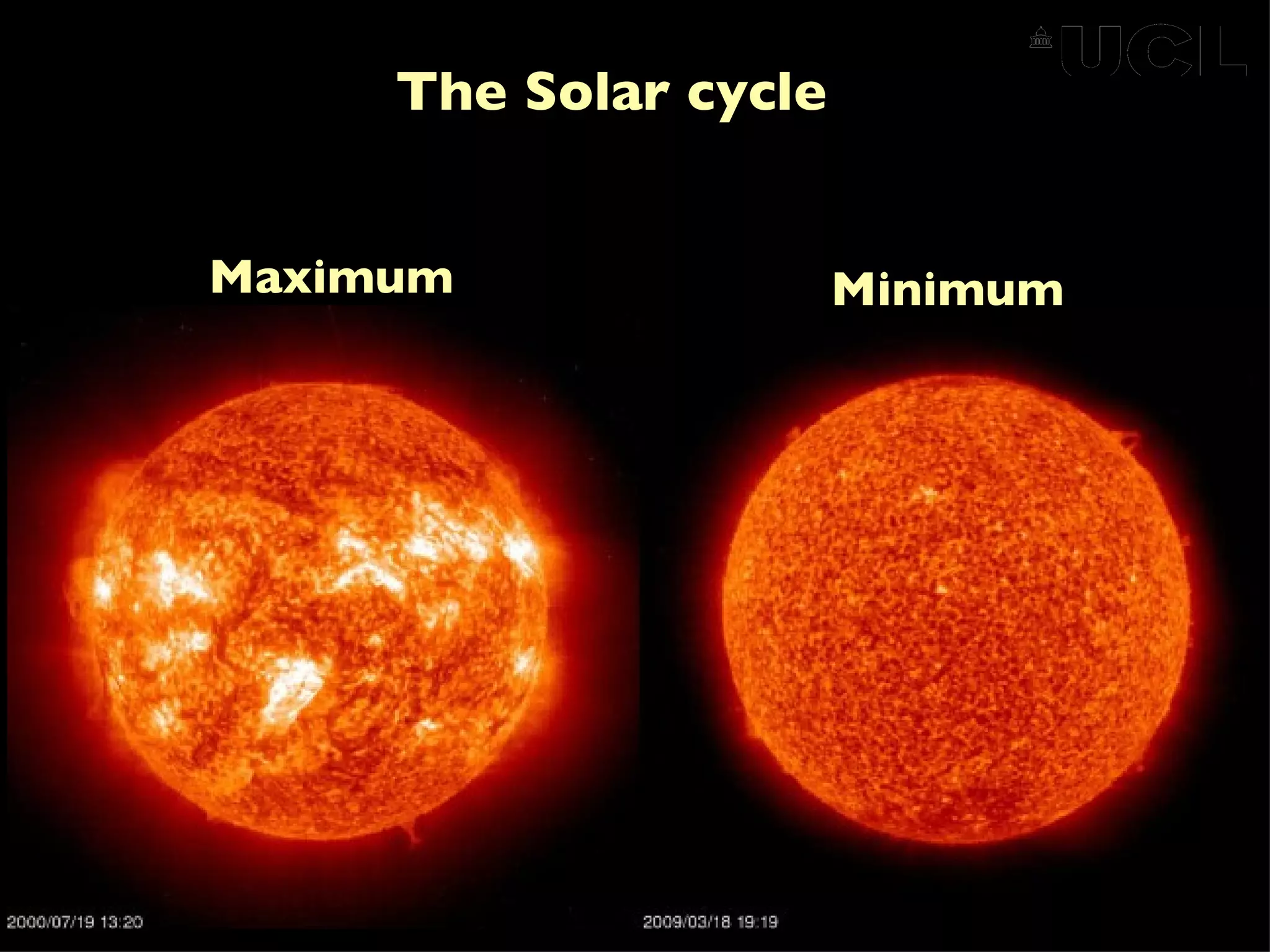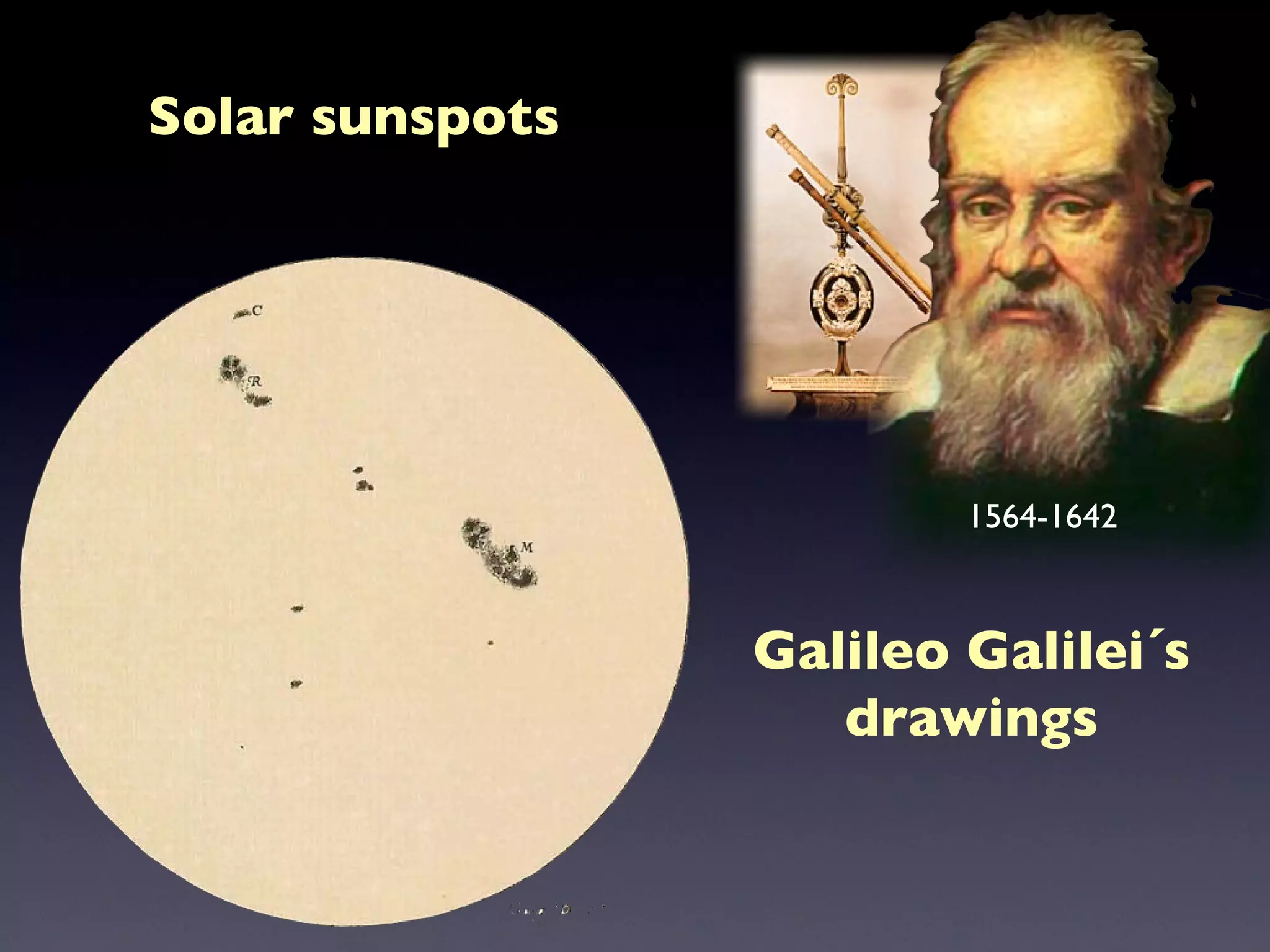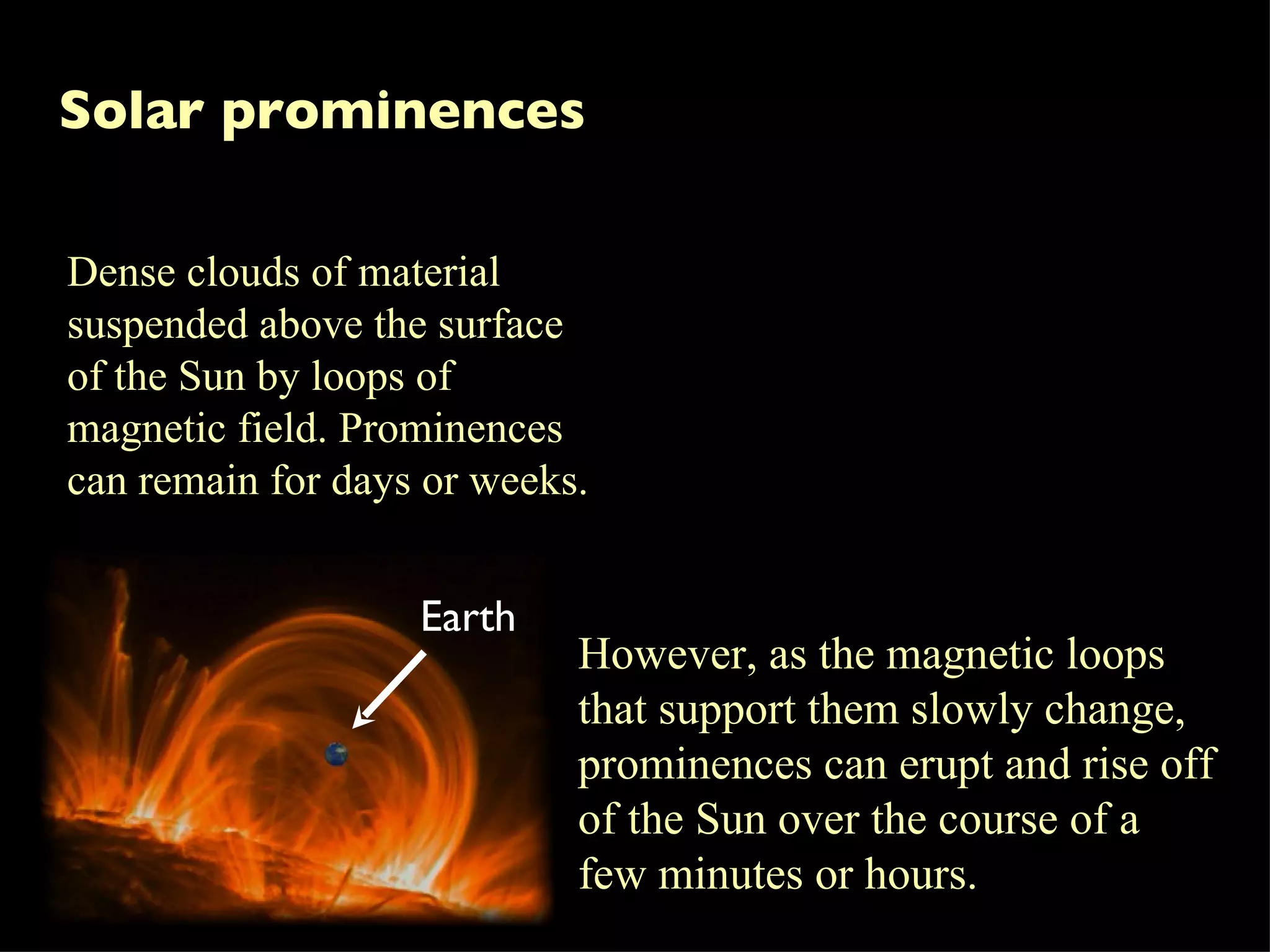This document provides an overview of solar exploration. It summarizes that the sun is a normal star that is made up mostly of hydrogen and helium. It discusses the sun's structure, temperature, magnetic field, and 11-year solar cycle. The document also describes various solar phenomena observed at different wavelengths, such as sunspots, flares, prominences, and coronal mass ejections, as well as their potential effects on Earth. It briefly mentions some open questions in the field and lists some past and present space missions that observe the sun.


